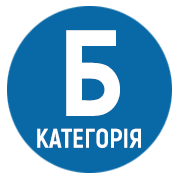SELECTION OF LEXICAL AND TEXTUAL MATERIAL FOR INDIVIDUAL FORMATION OF ENGLISH LANGUAGE LEXICAL COMPETENCE IN READING OF FUTURE PHILOLOGISTS
DOI:
https://doi.org/10.25128/2415-3605.18.2.14Keywords:
individual approach, criteria of vocabulary selection, lexical unit, text, students’ thesaurus, denotative meaning, connotative valueAbstract
The article defines the criteria for choosing lexical and textual material in English for individual formation of lexical competence in reading of the first-year students-philologists. The word with its denotative and connotative meanings, phraseological unity (with its semantics) is defined as the units of the choice of lexical material. The connected content-completed texts are the units of the selection of text material. On the basis of the criteria of compatibility, vocabulary matching with students' level of learning, word formation and building ability, a vocabulary minimum has been chosen, which is aimed at expanding the thesaurus of students with new lexical units with their denotative values and extending the semantic range of known lexical units. On the basis of the criteria of connectivity, content integrity, semantic and content completeness, linguistic accessibility, motivational content, information saturation, volume of the text, authenticity and functional conditionality, selection of texts corresponding to the level of students' learning level (respectively, for students with low learning level - texts with explicit content, for students with a medium learning level - texts with explicit content and implicit content fragments, for high learning level students - texts that have implicit content that require interpretation) aimed at expanding their thesaurus was made. It is substantiated that all texts should be integral, coherent, completed in content and meaning, accessible in the linguistic aspect, authentic, informationally saturated, in content appropriate to level B1, B1 +. They also should be interesting in content and should motivate students to read and study the language, however, to be different in terms of functional conditionality, depending on the level of students' learning level and their ability to read and interpret.
References
Загальноєвропейські рекомендації з мовної освіти: вивчення, викладання, оцінювання. – К.: Ленвіт, 2003. – 261 с.
Митрофанова К. А. Методика отбора иноязычного лексического материала для обучения студентов медицинских специальностей / К. А. Митрофанова // Известия РГПУ им. А. И. Герцена. – 2009. – № 98. – С. 155–160. [Електронний ресурс] – Режим доступу:
Навчальні програми для 10–11 класів загальноосвітніх навчальних закладів. [Електронний ресурс] – Режим доступу: https://mon.gov.ua/ua/osvita/zagalna-serednya-osvita/navchalni-programi/navchalniprogrami-dlya-10-11-klasiv.
Про затвердження Державного стандарту базової і повної загальної середньої освіти: Постанова Кабінету Міністрів України від 23 листопада 2011 р. № 1392. [Електронний ресурс] – Режим доступу: http://zakon.rada.gov.ua/laws/show/1392-2011-п.
Робоча програма з іноземної мови (англійської) для студентів спеціальності «Східні мови». – К.: КНУ ім. Т. Шевченка, 2017. – 48 с.
Робоча програма з першої іноземної мови (англійської) для студентів за напрямом підготовки 6.020303 Філологія (Переклад (англійська)). – К.: КНЛУ, 2015. – 76 с.
Negle S. J. Comprehension Theory and Second Language Pedagogy / S. J. Negle, S. L. Sanders // TESOL Quarterly. – 1986. – Vol. 20. – № 1. – P. 9–26.






